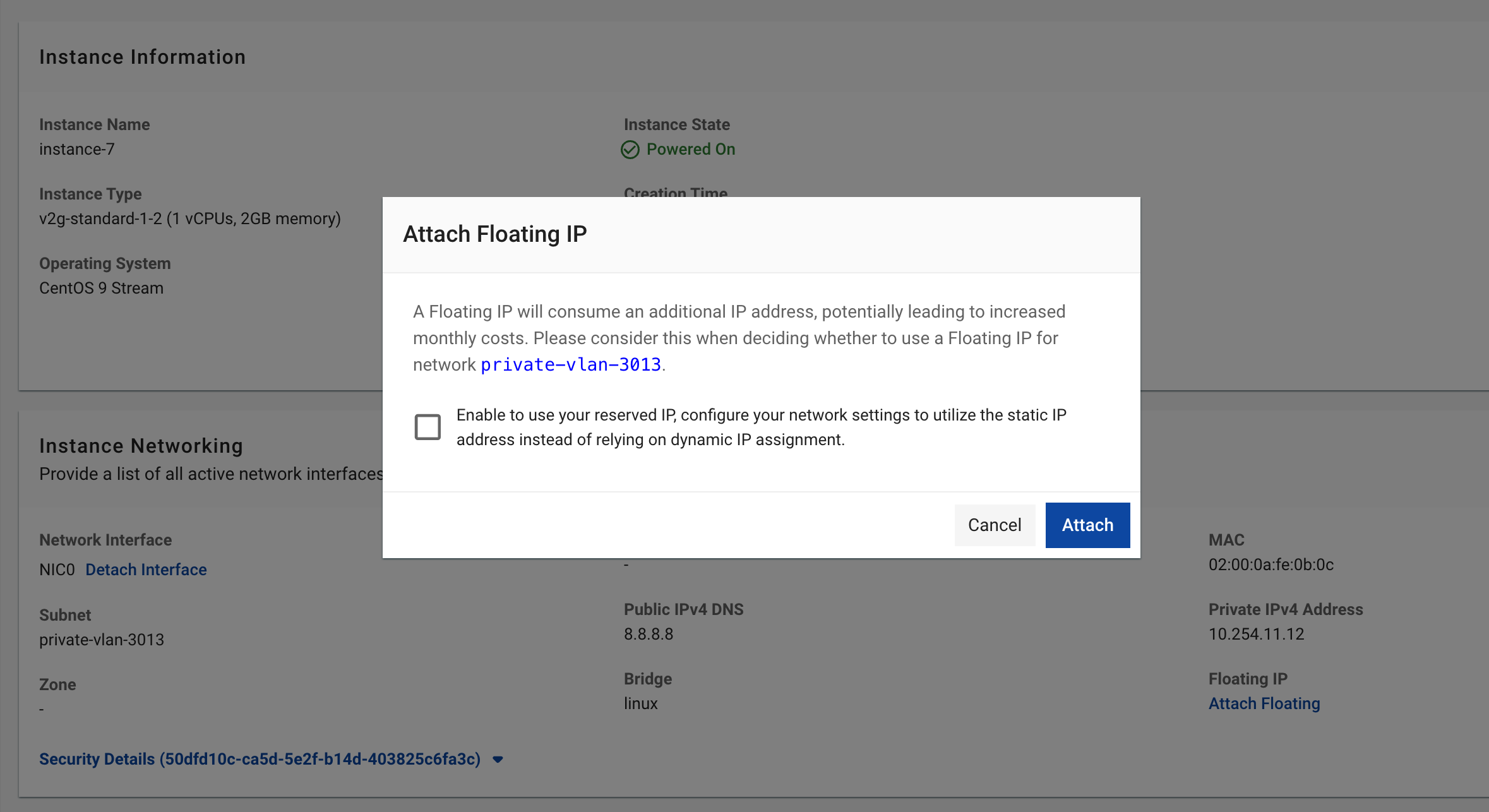Floating IP
Floating IP enables attaching a public IP address to servers running in private networks (VPC). This allows private network servers to be accessible from the internet without changing internal network architecture.
Overview
 Figure needed: Floating IP attachment interface showing public IP mapping to private network server
Figure needed: Floating IP attachment interface showing public IP mapping to private network server
Floating IP provides a public IP layer that maps (NAT) to a server's private IP address within VPC. When enabled, private network servers become accessible from the internet through the Floating IP address.
Benefits:
- Internet access for VPC servers: Enables bidirectional communication between internet and private network servers
- Protected internal architecture: Servers maintain private IP addresses for internal networking
- Flexible deployment: Attach/detach Floating IPs as needed
- Service migration support: Transfer Floating IPs between servers for configuration changes
Use Cases
- Web/application servers in private networks requiring internet access
- VPN servers for remote access to private networks
- Jump/bastion hosts for remote system administration
- Environments requiring strict network control while providing external services
Attaching Floating IP
Steps:
- Access server details page for private network server
- Find Floating IP section in network information
- Click Attach Floating link
- In dialog box:
- Review cost warning for additional public IP usage
- Optionally select Reserved IP for static address
- Click Attach to complete
Using Reserved IP Option:
When attaching Floating IP, you can use a pre-allocated Reserved IP (static address):
- Enable "Enable to use your reserved IP..." option
- Select Reserved IP from available list
- Click Attach to assign static IP as Floating IP
Cost Considerations
- Floating IP consumes an additional public IP address, increasing monthly costs
- Using Reserved IP as Floating IP will be charged as Reserved IP
- Dynamic IP (without Reserved IP) is charged as regular public IP
Security Configuration
After attaching Floating IP, ensure proper security configuration:
-
Security Groups: Configure to allow traffic to Floating IP:
- Allow necessary ports (SSH, HTTP, HTTPS, etc.)
- Restrict to trusted source IP addresses only
- Apply principle of least privilege
-
OS Firewall: Configure system firewall (iptables, firewalld, Windows Firewall) appropriately for Floating IP.
Detaching Floating IP
To remove Floating IP when no longer needed:
- Access server details page
- Find Floating IP section in network information
- Click Detach Floating link
- Confirm action with Understand and Detach
- Reserved IP will be released and can be assigned to other servers
- Dynamic IP will be returned to system pool